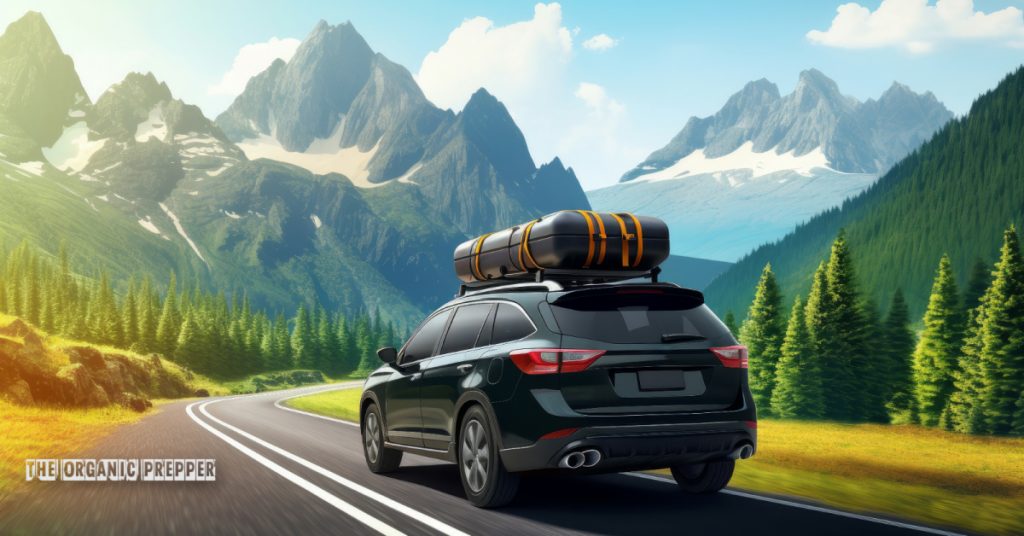by Daisy Luther, The Organic Prepper:

Moving is often a stressful time. Everything feels chaotic. All your worldly positions are packed in little boxes, and you have to pick up and relocate your whole life. Doubly so for a cross-country move.
A couple of weeks ago, I got a job offer out on the west coast of Canada, and while I’m excited, it’ll be the biggest I’ve ever made. My new home is almost 3000 miles away from my current one. Moving from one state or province to another also comes with its own set of required preps and things to do that you don’t even have to consider if you’re staying in the same one.
TRUTH LIVES on at https://sgtreport.tv/
Paperwork and official documents
A big part of prepping for a move like this is doing the research ahead of time to figure out what documents are going to need to be changed and things like figuring out your new insurance. Here are the things your going to want to remember to research, and do ahead of time if possible:
- Get a new driver’s license for your new state or province. Many places have rules that state you should be updating these documents within 30 days of living at your new home.
- Call your car insurance company. Not every insurance company covers every state or province. My current car insurance will only be valid in my new province for 30 days, at which point I have to go with a local company. So make sure to give yourself plenty of time, and call your car, health, and life insurance to see if any changes will need to be made and what you need to do.
- Change your address with things like your bank, your cell phone, any credit cards, your vehicle registration, or anyt that ever sends you mail.
What will driving conditions be?
When you’re moving cross country, especially if you’re driving, it’s important to do a little research ahead of time to know what your driving conditions will be. This will help you to better prepare for anything that may happen. With my move, I’ll be driving through the Rockies in winter, which I’m sure will come with its own set of obstacles. Luckily, coming from Ontario, I’m used to snow, but it doesn’t mean I won’t have things easily accessible if needed.
Here are the things you should have for your emergency vehicle kit, especially for a big move.
Make sure you know where any preps you may need, even if unlikely, are before starting your drive. Make them easily accessible because you never know when you could get stranded.
Staying organized and planning ahead
With moving, it’s so easy just to throw everything in random boxes and call it good. I know I’ve been guilty of it a time or two myself. When you take the time to be organized though, it makes everything on the other end of the trip so much easier. Whether you just give a general label of what’s in each box, (i.e. clothes, dishes, toys, etc.), or go into more details (i.e., plates and bowls, winter clothes), those labels will make it a lot easier to sort things upon your destination into the proper rooms, as well as find the things you need just that little bit faster.
Keep all your documents in one place
While doing a long drive, make sure you have all your necessary documents in one easily accessible place, doubly so if you’re crossing a country border. I’d also include either a copy of your job contract or a rental agreement if you already have one.
Collect all your receipts
Having an envelope ready near the driver’s seat for any expense you incur can be very helpful. If your move is being compensated via a relocation package with a new employer, it’s not just beneficial. It’ll probably be necessary as they will require receipts in order to reimburse you. Make sure if you are being reimbursed, you know what is and isn’t covered along the way.
Have a printed map or atlas.
Most days, people use their GPS or phone for directions, myself included. When you’re making a big move, though, you never know what you’ll run into. You may go through a stretch of road with no service, rendering your phone almost useless. If you don’t have a map or printer, most welcome centers and truck stops will often have maps of that state, as well as those nearby, either for free or cheap.
Don’t forget to have fun with it.
It’s not every day you get to road trip across a country. If you haven’t had the chance to before, do a little research and see if you’ll be passing anything cool along the way! When doing a move in one day, it’s not as realistic, but with a multiday trek; sometimes it’s worth the hour detour to see something amazing you’ve never had a chance to do before. While I’m still in the research stages, I fully intend to make my first drive through Yellowstone National Park and probably at least one or two other detours.
If you have the extra time, spend an hour or two and do something neat along the way. Maybe it’s trying a restaurant you’ve seen advertised, or maybe it’s going to a museum for an hour or two. You don’t have to spend a fortune, but if you’re already doing the drive, you might as well get the most out of it.
Have you ever moved cross country?
It can be daunting, but in the right circumstances, a cross-country move has the potential to be more fun than stressful. What are the things you make sure to have in easy reach on a cross-country move? What other tasks are essential? What are some things that surprised you? What was your experience like?
Read More @ TheOrganicPrepper.ca



